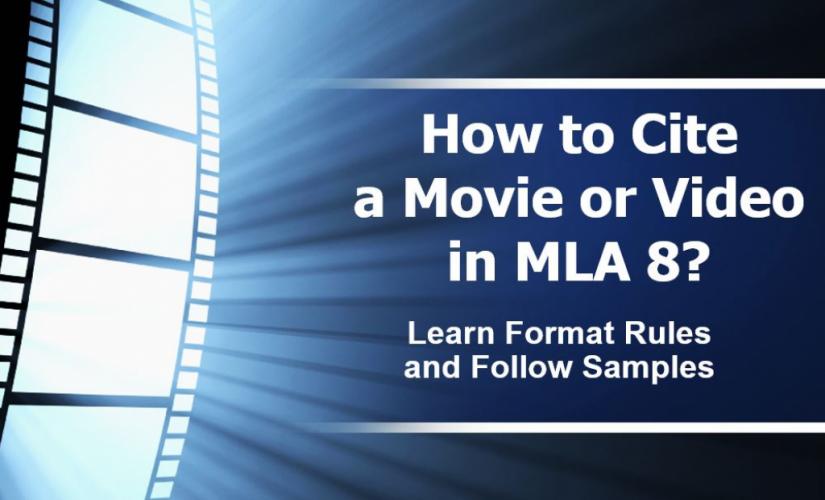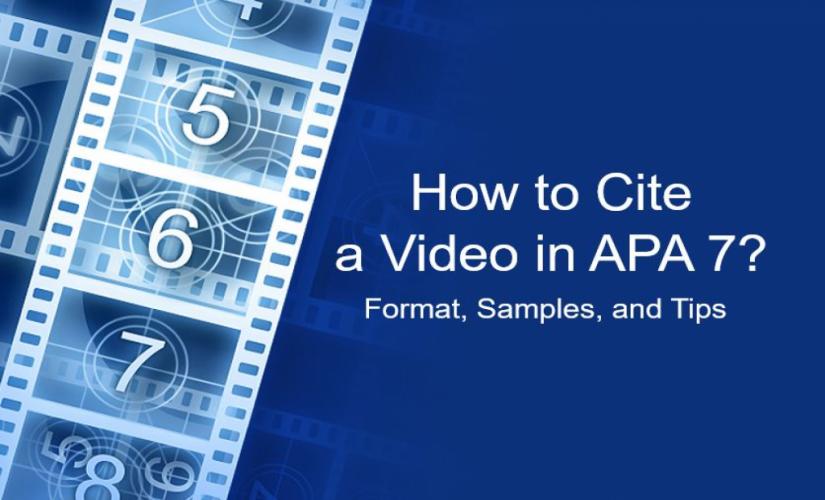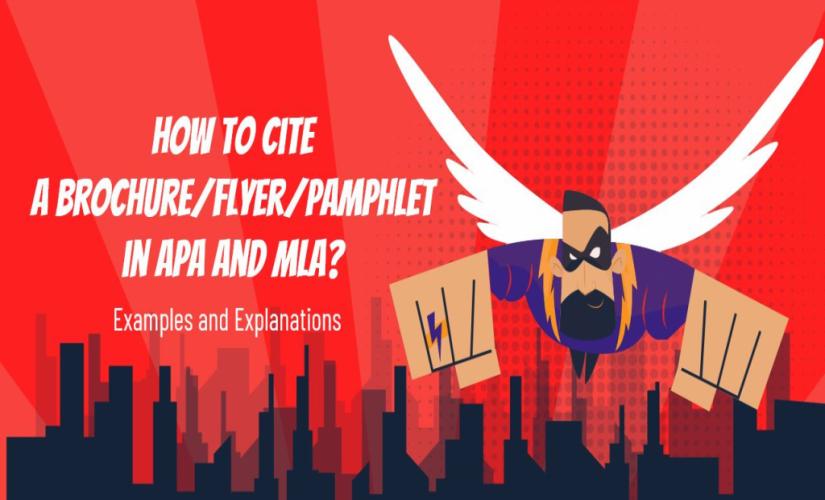Movies and other types of videos are among sources that a student can use in academic writing. In keeping with traditions and conventions of academic writing, students should cite videos that they access from different platforms appropriately. When citing a movie in MLA, writers should note several important things. Firstly, they should know that citing a movie or video in MLA 8/9 from a web page, a CD/DVD, YouTube, and database or streaming service requires unique Works Listed and in-text citations. Nevertheless, the critical thing to consider in all of them is that indicating contributors is essential. In turn, these elements include producers, directors, and performers.
General Aspects of Citing a Movie or Video in MLA 8/9
Students with academic writing assignments look for different sources to back up claims or strengthen arguments. Basically, these sources include books, peer-reviewed sources, government reports, and even films. By definition, a video is an electronic production of moving visual images through recording, reproducing, or broadcasting. As such, a movie can be a product of a production house, such as 20th Century Studios, or an individual. In this case, the former uses sophisticated equipment, while the latter relies on personal gadgets, such as a smartphone or a video camera. Therefore, the significant difference between a movie that students have to cite and their own video is that the former has a copyrights holder, a title, a year of production, and a producer. Also, the latter is only a video recording that students make in their day-to-day activities, such as recording an argument between colleagues.

Although students need to note the difference between a video they have created and a movie they have to cite, it is equally important that they understand the key aspects of citing video sources from diverse platforms. Importantly, a student must realize that many platforms provide access to videos, including movies, such as web pages, YouTube, databases, and streaming services. In turn, each of these platforms has a specific way in which a student should cite a movie therein by following MLA 8/9 standards.
Citing a Video Source from a Web Page in MLA 8/9
Today, the Internet hosts diverse productions, including academic texts and videos that educate or entertain. Unlike any other person who uses these productions, students do not merely use them for personal reasons. Basically, such types of sources are necessary for academic purposes. As such, when students use a movie that they find on a web page in their academic writing, they must cite it following the standards of the respective format. When citing such a video in MLA, writers should follow the structure below for the Works Listed citation.
Creator’s Surname and then First name. “Title of a Film or Video.” Title of a Website, the role and full names or usernames of any contributors, Version, Numbers, Name of a publisher, Date of publication, URL. Accessed date.
An example is as follows:
Brown, Andrew. “Faces of Africa – The Sahara.” YouTube, uploaded by CGTN Africa, 3 Oct. 2017, www.youtube.com/watch?v=LMHfYnS65w0. Accessed 27 June 2020.
The Structure of an in-text citation:
(The Surname of the creator and the timestamp).
An example would be:
In the YouTube documentary “Faces of Africa – The Sahara,” there is evidence of how African governments have contributed to the degradation of historic sites (Brown 00:01:48 – 00:02:16).
Sometimes, an online movie may not have an author. In such a case, the Works Listed citation should start with the title of the video.
An example is:
(“Faces of Africa – The Sahara” 00:01:12 – 00:02:18)
Also, see how to cite TV show episodes in MLA 8/9:
How to Cite a Movie From a CD/DVD in MLA 8/9
Although the Internet hosts many video platforms, a student can watch a movie through another channel, like a compact disc (CD) or a digital optical disc (DVD). In such a case, the structure of the Works Listed citation should be:
Creator’s Surname and then the First name. Title of a Movie or Video. Roles and names (first and last) of any other contributors, Version, Numbers, Publisher, Publication date.
An example would be:
Avengers Endgame. Produced by Kevin Feige and directed by Joe Russo and Anthony Russo, Marvel Studios, 2019.
An in-text citation would be:
(Avengers Endgame 01:27:00 – 01:28:22).
How to Cite a Movie in MLA 8/9
When citing a movie, students should italicize the title in both Works Listed and in-text citations. In the in-text citation, they need to indicate the relevant hour, minute, and seconds as it is displayed in the media player. Hence, the structure of the Works Cited citation should be as follows:
Title of Movie. Contributor(s). Publisher/Production Company, Year of Release.
An example is:
Parasite. Directed by Bong Joon-ho, performances by Song Kang Ho, Lee Sun Kyu, Yeo-Jeong Jo, Choi Woo-sik, Park So Dam, and Lee Jung Eun. Barunson E&A, 2019.
Notably, movies have many contributors, and, therefore, after the title, students should list the contributors most relevant to their writing. In this case, directors, creators, and performers are the most common contributors.
An example of an in-text citation for a movie in MLA 8/9 would be:
(Parasite 01:15:15-01:20:03).
Different Versions of a Movie
Sometimes, movies have different versions. If students cite a film with different versions, they need to state which version they have used to enable readers to find the correct source. In a case where a producer released the version after the original, writers should add the original release year after the title. Although doing so is optional, it often helps readers to gain a historical context of the source. Hence, an example of a Works Listed citation of a movie with different versions is as follows:
Mission Impossible. 1996. Directed by Christopher McQuarrie, Fallout, Paramount Pictures, 2018.
Just like there are many contributors, there are also many companies involved in the production and distribution of a movie. As such, it is sometimes difficult for a student to identify the leading producer of a film. In such a case, writers should identify the entity that had primary responsibility in the production process. Moreover, if several companies are equally involved, students should list and separate them with a forward slash. An example is as follows:
The Dark Knight. Directed by Christopher Nolan, performances by Christian Bale, Heath Ledger, Aaron Eckhart. Warner Bros. Pictures/DC Comics/Legendary Pictures/Syncopy, 2008.
Citing a Film or Video from Social Media, Database, or Streaming Service in MLA 8/9
Besides a web page and a CD/DVD, a student can cite a movie from a social media platform, an online database, or a streaming service. Today, people are creating videos and posting them on social media platforms. Also, film studios are providing viewers with a preview of a film by posting a trailer on social media sites. In turn, unlike past times, when people had to visit a movie theater to watch a blockbuster, today, they are watching movies from the comfort of their living homes courtesy of movie streaming services. The most common movie streaming services include Hulu, Netflix, Amazon Prime, HBO Go, and others.
Citing a Film in MLA 8/9
If students cite a movie that they have accessed on a social media platform, online database, or streaming service, they should follow the structure below for the Works Listed citation:
Creator’s Surname and then the First Name. Title of a Film or Bideo. The role and first and last names of any contributors, Version, Numbers, Name of a publisher, Date of publication. Database name, URL. Accessed date.
An example is as follows:
Inception. Directed by Christopher Nolan, performances by Leonardo DiCaprio, Joseph Gordon-Levitt, Ellen Page, Ken Watanabe, Legendary Pictures/Syncopy, 2010. Amazon Prime, www.amazon.com/-/es/Inception-Leonardo-DiCaprio/dp/B0047WJ11G. Accessed 27 June 2020.
An in-text citation would read:
(Inception 01:08:38 – 01:13:06)
How to Cite a Movie or Video from YouTube in MLA 8/9
There is not much difference in citing a video from a web page and YouTube. What students should take into consideration when citing a YouTube movie is to indicate the title of the video following standard MLA 8/9 rules for the capitalization of titles. As such, they need to avoid capitalization of the title as it appears on YouTube. Also, writers should omit the name of the creator of the movie if it is the same as that of the person who uploaded the video onto the online platform. In turn, the structure for citing a YouTube video should be similar to the one that a student uses to cite a movie from other online video platforms, such as Vimeo. Hence, the structure is as follows:
Creator’s Surname and then the First Name. “Title of the video.” YouTube, uploaded by “who,” Date of publication, URL (omit https://). Accessed date.
An example would be:
Leithead, Alastair. “Congo: A Journey to the Heart of Africa.” YouTube, uploaded by BBC News Africa, 20 Jan. 2019, www.youtube.com/watch?v=43xTvpxWLW4. Accessed 27 June 2020.
An example of an in-text citation is:
In the YouTube documentary “Congo: A Journey to the Heart of Africa,” a scene that shows the involvement of Europeans in Africa’s mining industry is proof of neocolonialism and its devastating economic and social effects in resource-rich Congo (Leithead 00:14-01:35).
In a case where the creator of the YouTube video is also the uploader, the Works Listed citation would be as follows:
Title of the Video.” YouTube, uploaded by “who,” Date of publication, URL (omit https://). Accessed date.
An example is as follows:
“Afghanistan: Wild Shepherdess with Kate Humble.” YouTube, uploaded by BBC News, 13 Mar. 2020, www.youtube.com/watch?v=UP8pA0v6QFE. Accessed 27 June 2020.
An in-text citation would be:
(“Afghanistan: Wild Shepherdess with Kate Humble” 09:34-12:35)
Summing Up
Citing films in MLA 8/9 is an exercise that students should master as their instructors may require them to use a movie source as a piece of evidence in their writing. Since there are various channels through which a student can access videos, it is incumbent upon them to learn how to cite movies from different platforms. As indicated above, there are various methods of citing videos from the web page, a CD, YouTube, and social media, database, or streaming service. Also, these differences relate to both Works Listed and in-text citations.
Tips
Regardless of a movie source students citing a video in their writing should learn the following tips:
- Differentiate between a video, a series, and a documentary.
- Understand who to give credit for a video. As indicated in the preceding section, a video can have several contributors, including producers and directors. As such, a student should know who to mention in the citation and who to ignore. In turn, the best way to cite significant contributors is to first indicate their role in the movie before indicating their name.
- Note significant contributors to a video, such as a movie. In this case, students should acknowledge them by indicating: Directed by, performance(s) by, created by, narrated by, edited by, and so on.
- For videos from web pages, including YouTube, writers need to credit a person who posted the movie content.
- Because videos have no page numbers, students must include a timestamp by indicating the creator’s surname with hours:minutes:seconds. However, if a movie is less then an hour-long, writers cite the creator’s surname with minutes:seconds.


